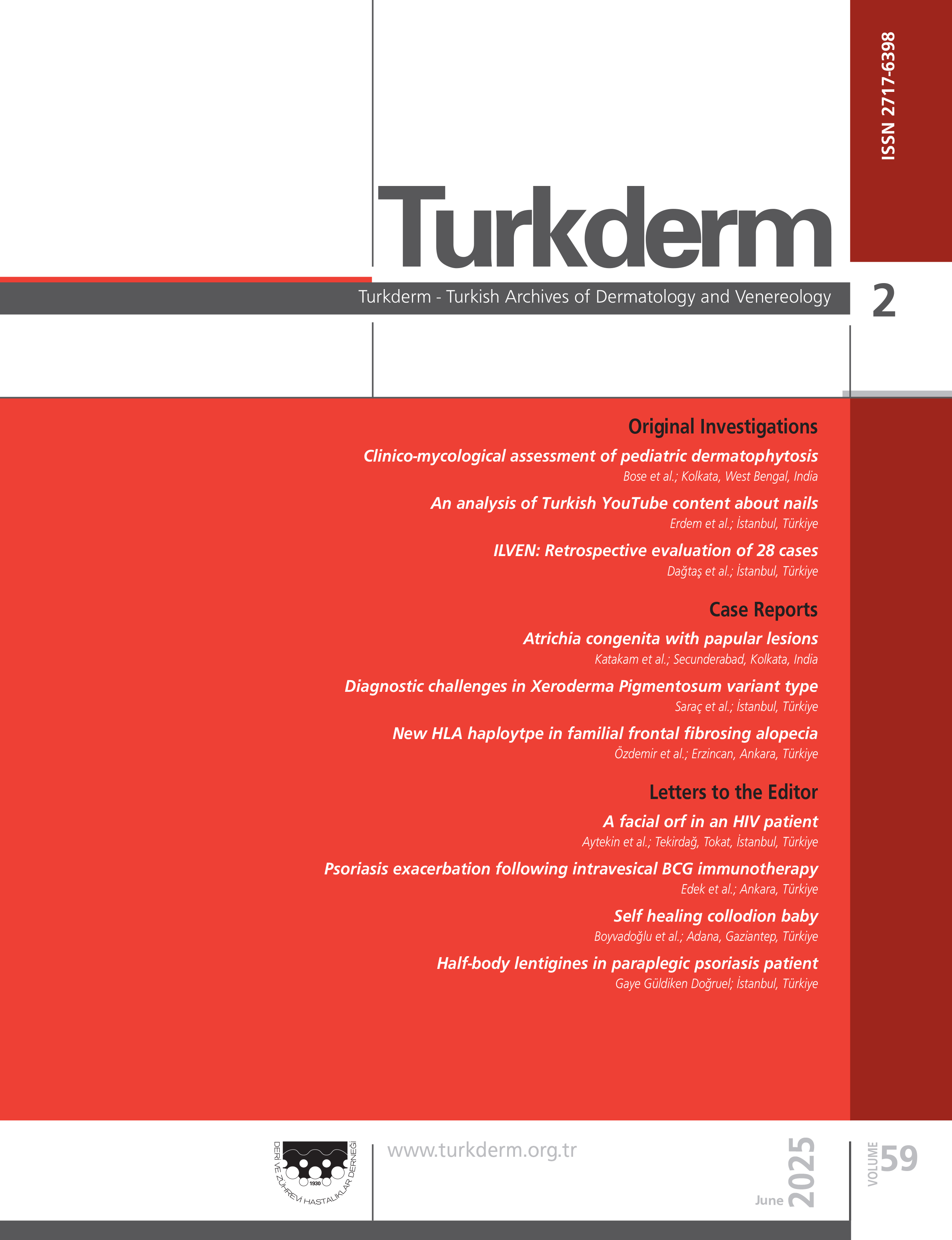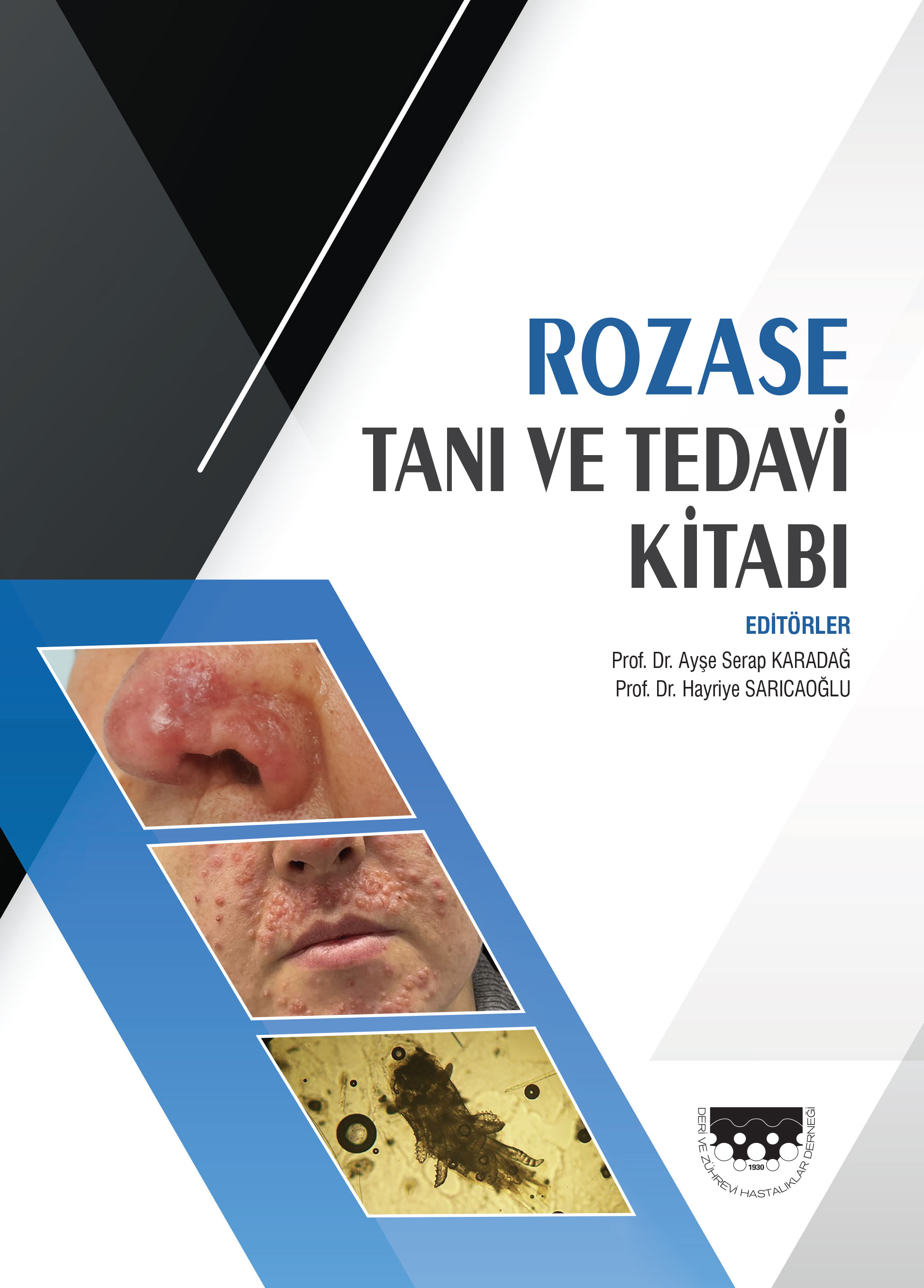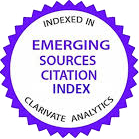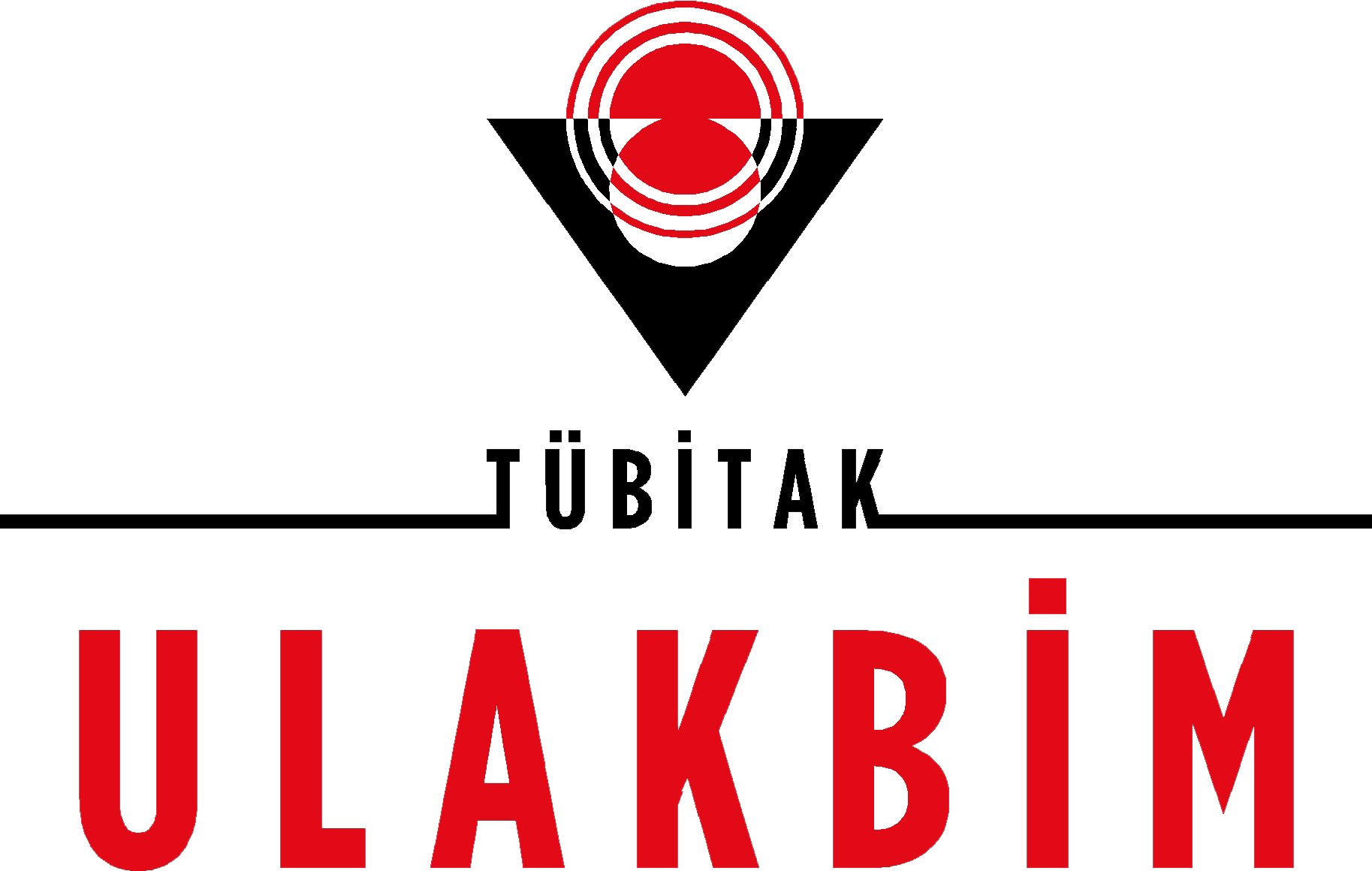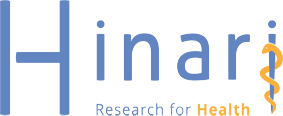Volume: 58 Issue: 4 - 2024
| 1. | Cover Pages I - IV |
| ORIGINAL INVESTIGATION | |
| 2. | Exploring the immunohistochemical profile of basosquamous carcinoma and its clinicopathological associations Cemile Tuğba Altunel, Gonca Özgün, Arzu Karataş, Özlem Özen, Deniz Seçkin, Tülin Güleç, Deren Özcan doi: 10.4274/turkderm.galenos.2024.02072 Pages 92 - 98 Background and Design: Basosquamous carcinoma (BSC) is widely accepted as a basal cell carcinoma variant. Despite an unknown molecular pathogenesis, specific mutations are associated with its squamatization. Immunohistochemical studies offer insights into the tumors genetic background. However, extensive investigations into its immunophenotype are lacking, and existing data present conflicting results. Materials and Methods: We analyzed the clinicopathological and immunohistochemical characteristics (Ber-Ep4, CK14, CK17, p53, p63, and Ki-67) of BSCs diagnosed between 1996 and 2017. Data were collected on patient demographics and tumor features, including location, ulceration rate, margin status, tissue invasion, mitotic activity, predominant cell type, and peritumoral lymphocytic infiltration. We explored the correlations among all parameters, including staining positivity rates and percentages, to understand their relationships better. Results: One hundred and four BSCs (68 males, mean age 67.99±14.95) were included. The most common location was the nose. Ulceration rate and margin positivity were 70.2% and 22.1%, respectively. The cartilage, muscle, lymphovascular, and perineural invasion prevalences were 3.8%, 11.5%, 5.8%, and 5.8%, respectively. The mitotic activity was moderate-high in 68% of the tumors. The immunopositivity rates were; Ber-Ep4, 78.8%; CK14, 93.3%; CK17, 89.4%; p53, 80.8%; p63, 98.1%; Ki-67, 100%. Ulceration was associated with squamous cell predominance and CK14 positivity. The Ber-Ep4 intensity was higher in lesions with lymphovascular invasion. CK17, p53, and p63 expressions were higher on the scalp and face than in other sites. The p53 staining was associated with ulceration and peritumoral lymphocytic infiltration. The mitotic activity was correlated with the Ki-67 score. Conclusion: This study sheds light on the relationship between the clinicopathological and immunophenotypic characteristics of BSCs through an investigation of a large cohort. It has a high proliferation and ulceration rate. High margin positivity favors wide-excision margins. Long-term follow-up studies will clarify the prognostic significance of immunohistochemical markers mentioned in the study. |
| 3. | The relationship between psychological distress and neurotrophins in patients with alopecia areata: A crosssectional study Hatice Parlak Subaşı, Hilal Kaya Erdoğan, Ersoy Acer, Evin Kocatürk, Ali Ercan Altınöz, Zeynep Nurhan Saraçoğlu, Muzaffer Bilgin doi: 10.4274/turkderm.galenos.2024.52711 Pages 99 - 105 Background and Design: Alopecia areata (AA) is a common, chronic, autoimmune disease that causes psychological effects on patients. Distress and psychological factors play roles in the onset and flares of the disease. We aimed to evaluate the relationship between neurotrophins (NT) and psychological distress in AA patients. Materials and Methods: The study included 50 AA patients and 50 healthy volunteers as a control group. The Distress Tolerance Scale (DTS) and the Depression Anxiety Stress Scale-21 (DASS-21) were used in the evaluation of psychological distress. Serum levels of NTs [brain-derived neurotrophic factor (BDNF), nerve growth factor (NGF), neurotrophin-3 (NT-3), and neurotrophin-4 (NT-4)] were measured. Results: Scores of DASS-21 were found to be higher, and scores of DTS were found to be lower in AA patients. Serum BDNF and NT-3 levels did not differ significantly between groups. While the serum NGF level was significantly higher, the NT-4 level was significantly lower in the AA group than in the control group. In the AA group, a similar significant relationship was found between BDNF and stress subscale scores; in the control group, no significant correlation was found between serum NT levels and DASS-21 and DTS scores. Conclusion: Our study supports the relationship between AA, psychological factors, and NTs. More studies are needed to investigate the relationship between AA and stress neuroimmunology to understand better the common pathophysiology of AA, stress, and various psychiatric diseases. |
| 4. | Assessment of attitudes and goals regarding cosmetic procedures among individuals aged 18 to 28 Kadir Küçük, Selda Pelin Kartal doi: 10.4274/turkderm.galenos.2024.85353 Pages 106 - 111 Background and Design: The number of cosmetic procedures is increasing, and currently, young people are undergoing more procedures. Personal and social factors underlie this, and social media has been added. This study evaluates the judgements of young individuals between 18 and 28 years old about their faces and cosmetic procedures from a dermatological aspect. Materials and Methods: Individuals aged 18 to 28 who visited our clinic were included. The data collected using the prepared questionnaire were analyzed using SPSS 25.0. The statistically significant p value is below 0.05. Results: Individuals who desire facial changes report higher levels of dissatisfaction. Women are more likely to express dissatisfaction and desire cosmetic procedures. Childhood teasing is associated with a greater desire to undergo surgery. Personal opinions and social influences play a significant role in decision-making. Income, education, and family factors may influence perceptions of cosmetic procedures. Dissatisfaction with appearance is associated with cosmetic procedures. Conclusion: Cosmetic procedures are positively received in the 18-28 age group. Personal opinion is the most critical factor in decisionmaking, but social circles and the internet are also influential. The scores were similar in terms of necessary, luxury, and unnecessary. Individual expectations are at the forefront rather than social media and the internets influence. Healthcare institutions are the primary source for consultation and treatment, but the internet is the second most common source of information. |
| 5. | Effects of interleukin-12/23 inhibitors and interleukin-17 inhibitors on myocardial functions in patients with severe psoriasis Leyla Baykal Selçuk, Mursel Şahin, Burcu Aydemir, Deniz Aksu Arıca, Savaş Yaylı doi: 10.4274/turkderm.galenos.2024.20737 Pages 112 - 116 Background and Design: Systemic inflammation, which is involved in the pathogenesis of psoriasis, has been associated with the development of systemic diseases such as metabolic syndrome and cardiovascular disease. Without prospective data, the relationship between biological therapies and myocardial function in patients with severe psoriasis remains unclear. This study aimed to evaluate myocardial function changes through various parameters in psoriasis patients undergoing biological therapy for 12 months. Materials and Methods: Patients were evaluated at the beginning of treatment and after 12 months using transthoracic echocardiography to assess systolic and diastolic heart functions. Results: A total of 39 patients (20 males, 19 females) with a mean age of 44.28±13.54 years were included. All treatment groups significantly decreased psoriasis activity and severity index scores after 12 months (p<0.001). No significant changes in biochemical metabolic parameters were observed in any groups during the first year of treatment. A significant improvement in left ventricular global strain was observed in the ustekinumab, secukinumab, and ixekizumab groups compared to baseline (p<0.001, p=0.005, and p<0.001, respectively). A significant improvement in the E/e ratio was noted in the ustekinumab and ixekizumab groups, but no change was found in the secukinumab group (p=0.017, p=0.010, and p=0.980, respectively). Conclusion: This study observed improvements in systolic and diastolic cardiac functions in patients with severe psoriasis treated with antiinterleukin- 12/23 (IL-12/23) inhibitors and anti-IL-17 therapies. |
| CASE REPORT | |
| 6. | Pityriasis lichenoides chronica following SARS-CoV-2 infection: A case report and brief report of the literature Yusuf Can Edek, Fatma Sena Gürevin, Nilsel İlter doi: 10.4274/turkderm.galenos.2024.99148 Pages 117 - 120 Severe acute respiratory syndrome-coronavirus-2 (SARS-CoV-2) is a newly identified type of coronavirus that causes coronavirus disease-2019 (COVID-19) and has been associated with numerous skin manifestations. Although COVID-19 primarily affects the respiratory system, it can also involve many systems, such as the cardiovascular, gastrointestinal, and urogenital systems, in the course of the disease. Skin findings can be observed frequently in the course of the disease. Pityriasis lichenoides (PL) is an inflammatory skin disease that includes pityriasis lichenoides et varioliformis acuta (PLEVA) and pityriasis lichenoides chronica (PLC). PLEVA is characterized by erythematous papules, vesicles, ulcers, and hemorrhagic crust formation, which can be observed in the lesions over time. PLC is characterized by red-brown papules and plaques with mica-like scales. Extrinsic antigens such as drugs, infections, and vaccines can trigger the immune system and cause disease development. In addition, immune complex-mediated hypersensitivity reactions due to etiological factors and clonal T-lymphocyte proliferation are also involved in the etiopathogenesis of the disease. Viral infectious agents in etiology include Epstein-Barr virus, cytomegalovirus, varicella-zoster virus, and parvovirus-B19. SARS-CoV-2 may play an important role in the etiopathogenesis of dermatological diseases. Although the apparent relationship between PL and SARS-CoV-2 is not fully understood, cases of SARS-CoV-2-triggered PL have been reported. This case report presents a rare case of PLC triggered by SARS-CoV-2 infection. |
| 7. | A case report of squamous cell carcinoma in ichthyosis hystrix Curth-Macklin Vishalakshi Pandit, Rakesh Yelhanka doi: 10.4274/turkderm.galenos.2024.30837 Pages 121 - 124 The Curth-Macklin type of ichthyosis hystrix is an extremely rare genodermatosis presenting as generalized or nevoid forms. Clinical expression varies in the time of onset and morphology, even within families, from painful palmoplantar keratoderma to a severe, generalized involvement with hyperkeratotic and papillomatous coalescent papules distributed extensively and bilaterally in whorled arrays of thickened, darkened, hystrixlike velvety lesions anywhere on the skin surface. There are few case reports of patients with ichthyosis hystrix who developed malignancies. We report a sporadic case of a 73-year-old man who presented with an unusual manifestation of ichthyosis hystrix and developed squamous cell carcinoma. Ichthyosis hystrix Curth-Macklin is a rare congenital ichthyosis that has developed multiple keratoses and malignancies over a long time. Therefore, early diagnosis, treatment, and regular follow-up are required in these patients. |
| LETTER TO THE EDITOR | |
| 8. | Alopecia areata incognito: A rare cause of hair loss in children Ahmet Kağan Özdemir, Yıldız Hayran, Güneş Gür Aksoy doi: 10.4274/turkderm.galenos.2024.94752 Pages 125 - 126 Abstract | |
| 9. | Cutaneous granulomas preceding peripheral cutaneous T-cell lymphoma NOS: A call for ongoing surveillance for late-onset malignancy Selin Kolsuz, Cüyan Demirkesen, Günel Rasulova, Olga Meltem Akay, Seçil Vural doi: 10.4274/turkderm.galenos.2024.63549 Pages 127 - 129 Abstract | |
| 10. | Subject Index Pages E1 - E2 Abstract | |
| 11. | Referee Index Page E3 Abstract | |
| 12. | Author Index Page E4 Abstract | |


